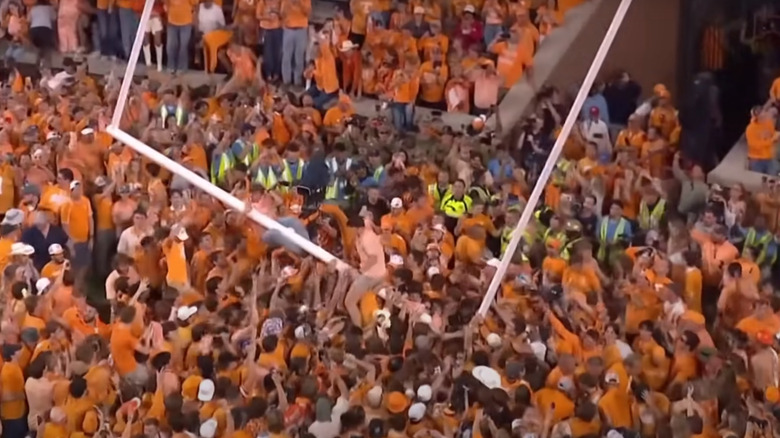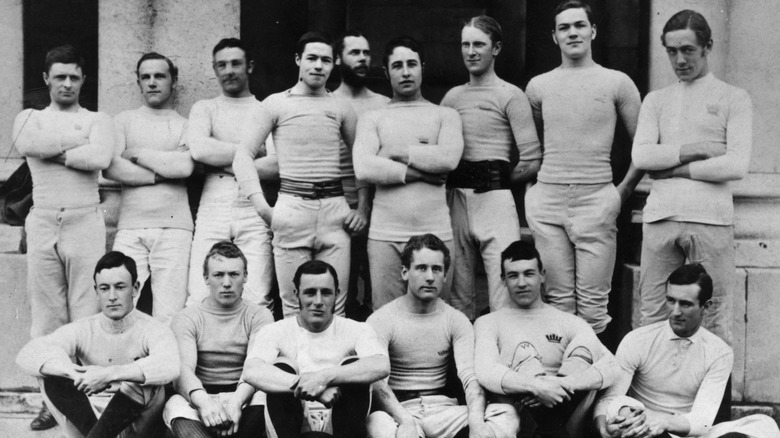How Are Football Goal Posts Designed To Withstand Surging Fans?
On October 15, 2022, a college football game for the ages took place — or, as Slate called it, "why God invented college football." The underdog Tennessee Volunteers beat their arch-rivals, the Alabama Crimson Tide, in dramatic fashion. Afterward, thousands of Tennessee fans stormed the field and, in their jubilation, tore down the goal posts.
It may seem like a strange way to celebrate an important victory — through vandalism and criminality — but the intersection between emotions and sports is a strange thing, and fans rioting after an important victory is nothing new, either in college football or in professional sports. As it relates to football specifically, one particular act of vandalism that has been a thing for decades is tearing down the goal posts. And there's a reason it takes the cooperation of thousands of fans to tear them down: they weigh several hundred pounds, according to Daily Press. Further still, they cost tens of thousands of dollars, and once they're torn down, there's no repairing them — rather, the team will have to replace them from the ground up.
These Things Are Solidly Built
The goal posts that are used in professional football and in top-tier college football stadiums (as opposed to the minor-league model that may adorn your local high school team's field) are built to last. As such, tearing them down is going to require some effort — it took the coordinated movements of several hundred fans to knock down the Tennessee goal posts, as seen above.
As Fox Sports explains, NFL goal posts take about 18 hours to install, weigh upwards of 500 pounds, and are designed to withstand 115 mph winds. Some college football programs have gone to rather extreme lengths to keep their goal posts from being torn down by raucous fans (via Daily Press). For example, some models weigh upwards of 1.5 tons and are embedded 6 feet into the ground. Other programs apply grease to the metal or install goal posts that collapse.
It's not just the expense of replacing them ($18,000 or more) that keeps college football programs keen to see their goal posts remain intact. Considering how much they weigh, fans can easily be injured should the devices fall on them.
How Did This Bizarre Tradition Start?
It seems that the tradition of tearing down the goal posts at a college football game goes all the way back to the Ulysses S. Grant administration, according to The Atlantic. In this particular case, however, it was done not after the November 18, 1876 game but during the game, and it was done with the goal of preventing the other team from scoring. Specifically, rowdy Yale fans tore down the goal posts to prevent Harvard from scoring a field goal.
In the century and a half or so that this has been a thing, there have been some rather bizarre incidents. For example, in 1981, Northwestern fans tore down the goal posts not after a victory but after a loss; the team had set a record for ineptitude with 29 straight defeats, and fans chanted, "we're the worst" while tearing down the posts (per The Atlantic). And in 2014, after Marshall beat Louisiana Tech, fans tore down the goal posts and then carried them to a nearby steel mill with a view toward having the metal melted down into commemorative pieces (via Sports Illustrated). The mill refused, but a fan in the parking lot stepped up (because he brought his forge to the game that day?) and did the job.


